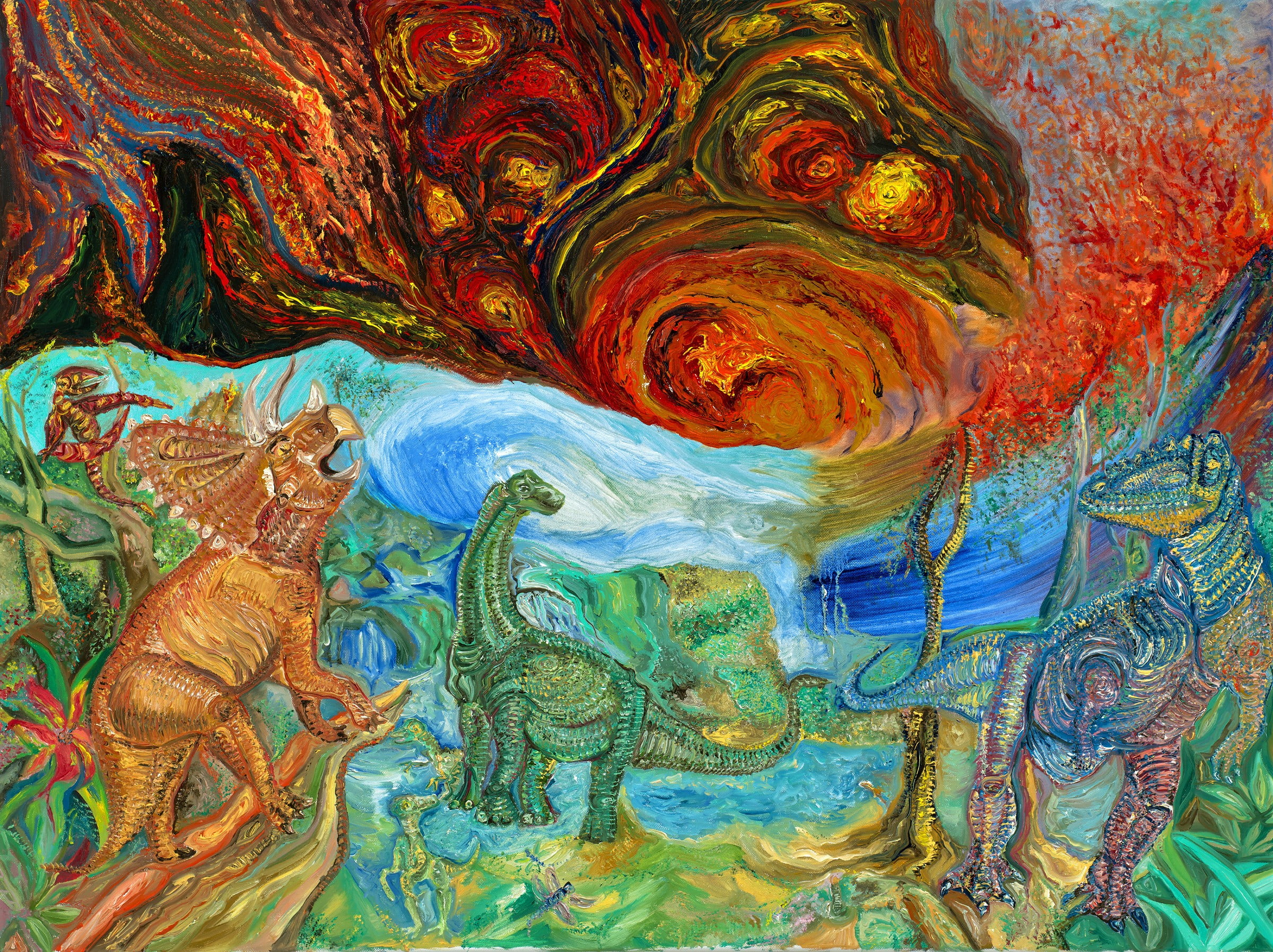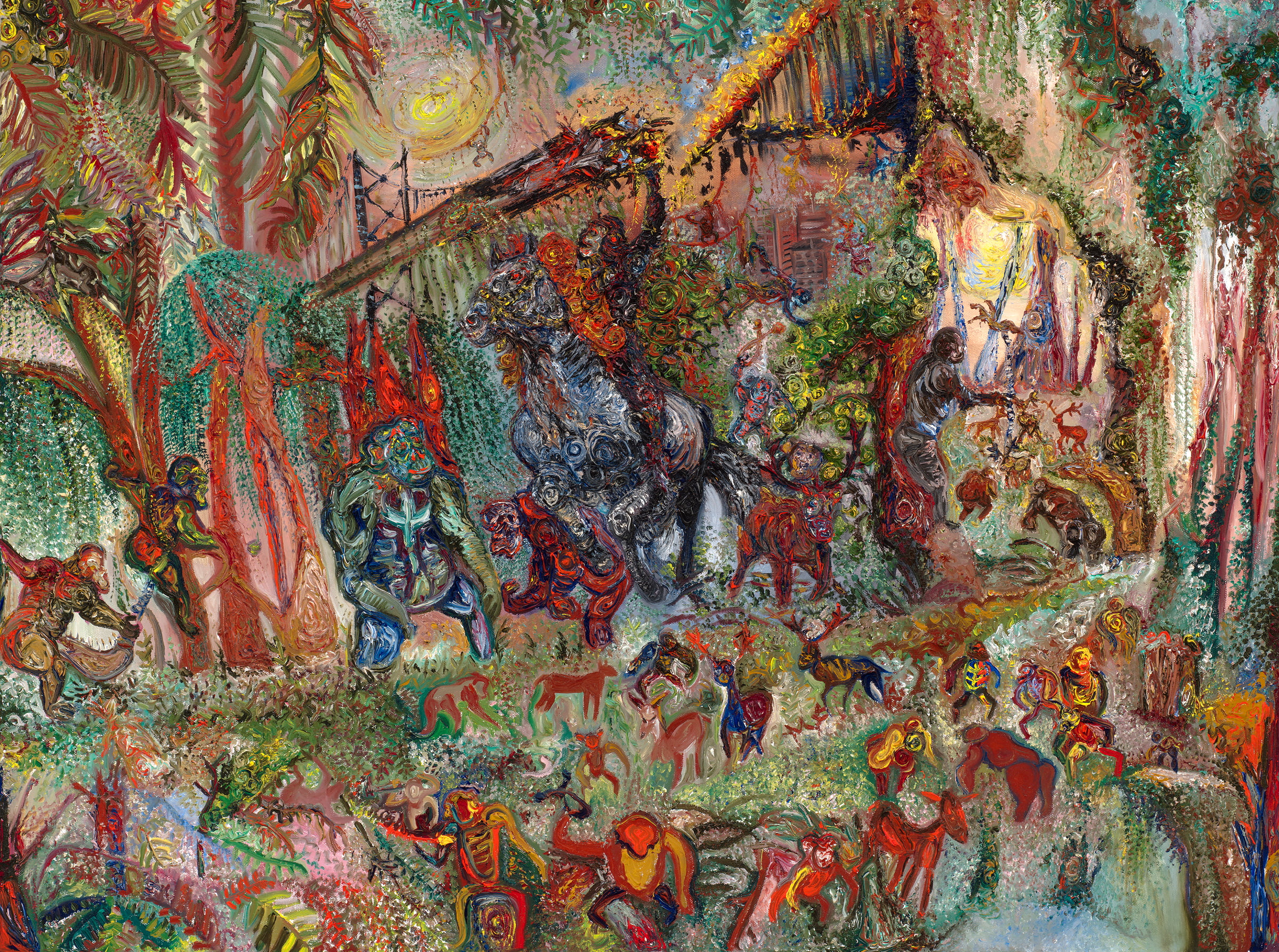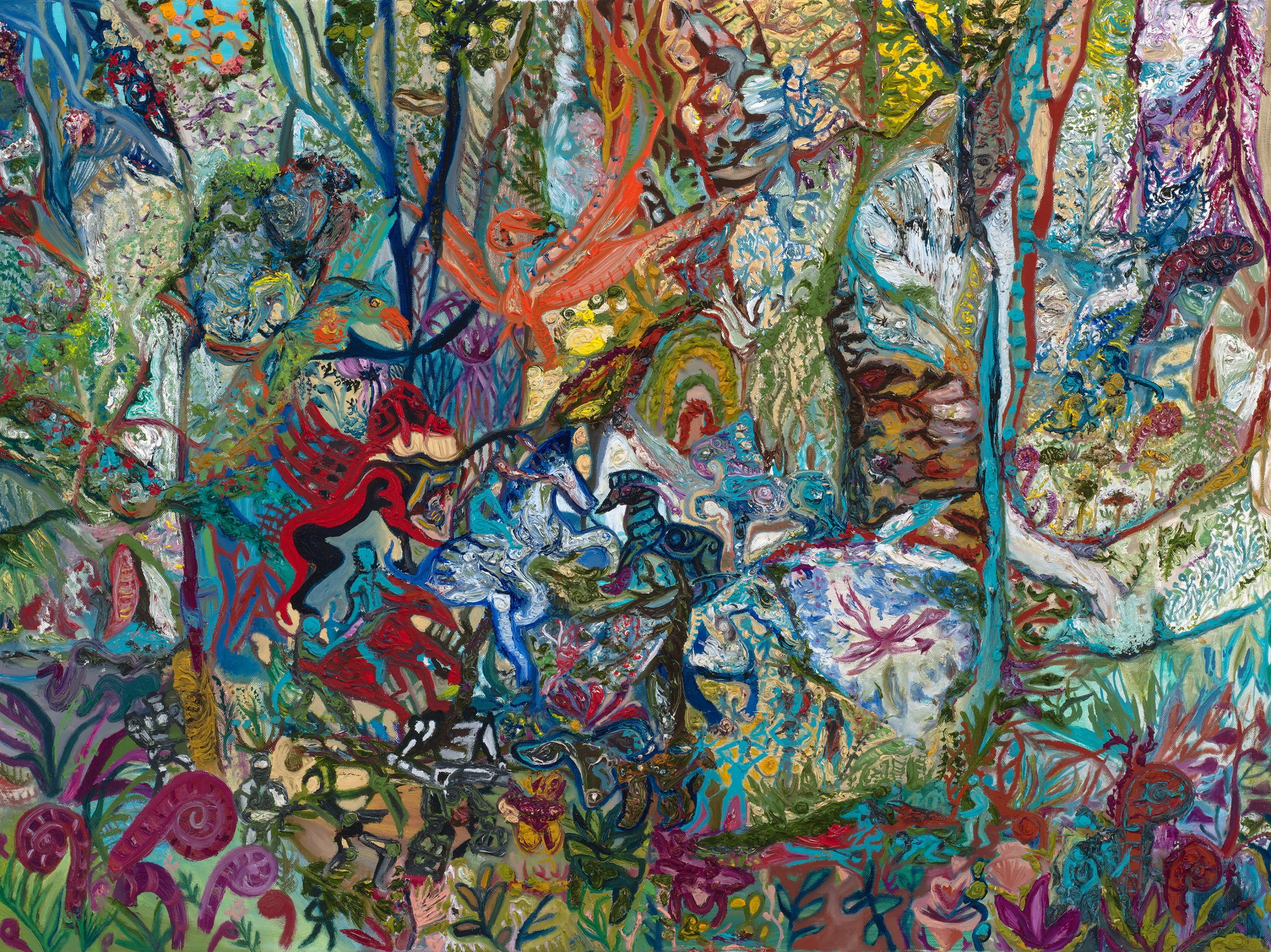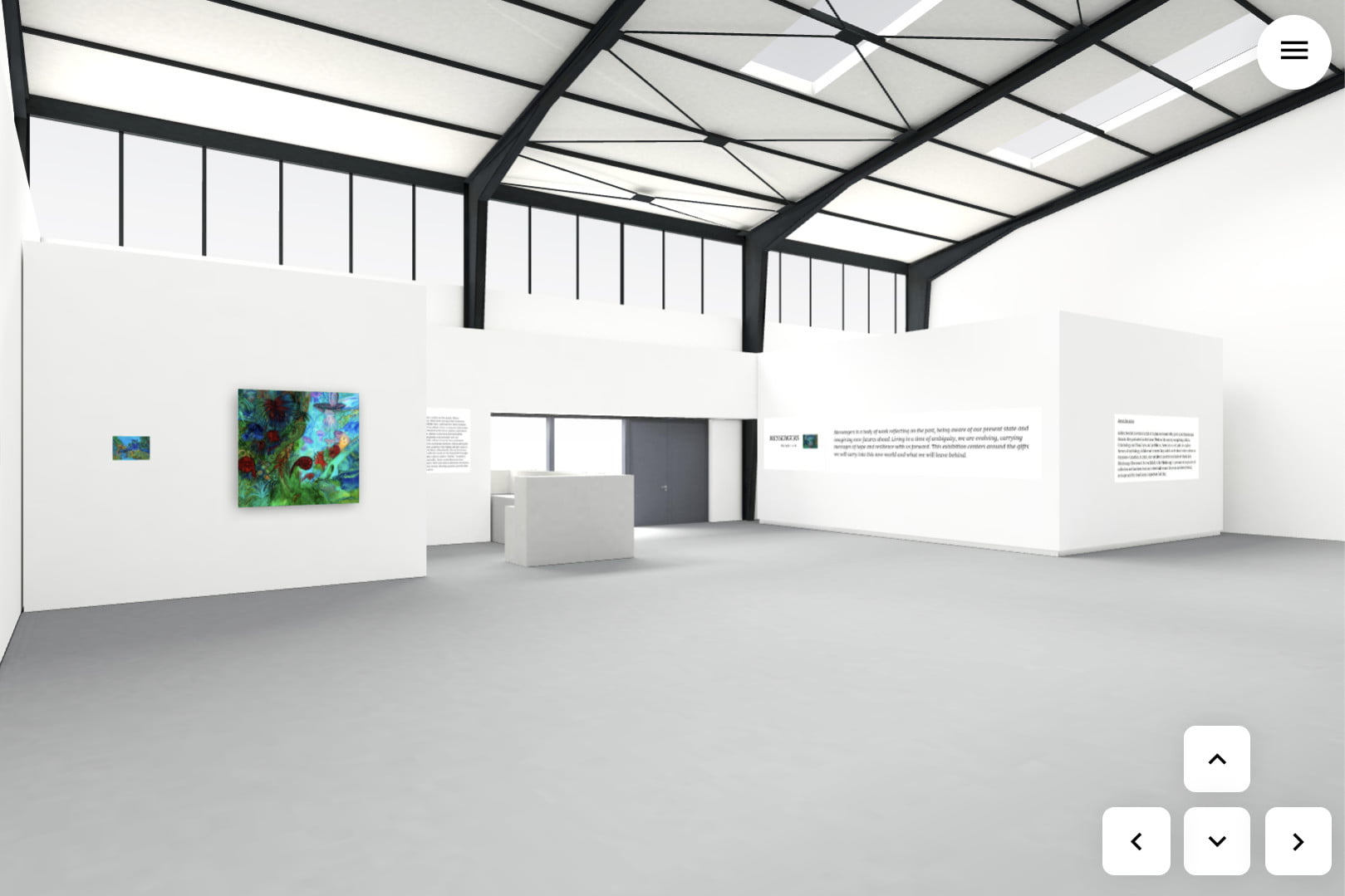Messengers
by Ashley BeerdatMessengers is a body of work reflecting on the past, being aware of our present state and imagining new futures ahead. Living in a time of ambiguity, we are evolving, carrying messages of hope and resilience with us forward. This exhibition centers around the gifts we will carry into this new world and what we will leave behind.
Stories of Past, Present & Future
Burned but not forgotten
66 Million years ago giant beasts roamed the Earth. These cretaceous inhabitants had over a thousand different species in various colours and sizes. Their skin felt like leather and they carried a smell similar to pine trees. These creatures had razor-sharp teeth that could cut through glass and could detect noise from miles away. Some were strong runners whereas others could fly and swim. Almost half of their species were carnivores and some would feast on each other. These wild beasts relied on the great ball of fire; controller of all life for survival. A rocky man wanted to steal the power of the great fireball. He orbited around her and struck her with brute force. However, she was too strong and the collision caused the rocky man to catch on fire and plummet into the Earth at 40,000 miles per hour. He struck the Earth with such intensity, creating a large crack that gradually opened and ignited wildfires and unbearable heat that broiled the Earth’s surface. The shock waves triggered deadly eruptions sending the beasts into extinction. However, through their descendants and fossils left behind, their legacy lives on.
Trapped in a labyrinth
They stood there surrounded by confusion, afraid of what would happen. Trapped by every corner with no clear path to lead them through. The forest was a labyrinth, full of intricate passageways and chambers with no way out. They walked aimlessly, back and forth and circling the same path again and again. The forest was constructed to keep anything that entered inside. The forest feeds on those who enter. Feelings of frustration and terror naturally arise. There were no revelations, only losing touch with reality. They kept waiting for something to be unlocked, but there was nothing but monsters lurking nearby.
Planting seeds for future Blues
Five hundred years from now new descendants reside on the moon. These extraterrestrial creatures are called The Blues. They have strong feline features, blue striped skin, pointed ears, large eyes, catlike tails, and narrow-body frames. Their hair is directly connected to the brain that allows them to connect with other organisms to send signals, thoughts and memories to the trees, plants, and other creatures. The blues follow a philosophy that all life is precious and should be honoured. This includes paying respect to the plants and animals that are harvested or killed to provide sustenance. Their culture is based on a profound spiritual connection to other life on their moon including the flora, fauna and each other. The Blues worship the “Eywa,” a mother goddess who keeps all the souls of living creatures within her until it is time to be born. After death, the soul returns to “Eywa.” They believe they can commune with the souls of the departed through linking with “the tree of souls” which provides a direct link to “Eywa.” A seed is planted in every body of a deceased Blue. Eventually, these seeds blossom into small jellyfish-like spirits that float on the wind. They are seen as bearers of omens and signs, carrying secrets that can foretell the future. Moving against gravity they carry gifts to sustain the next generation to come.
#carry-forward
About the artist
Ashley Beerdat is a self-taught visual artist of Guyanese descent who grew up in Mississauga Ontario. She graduated in 2019 from Western University, completing a BA in Criminology and Visual Arts and Art History. Beerdat uses oil paint to explore themes of mythology, folklore and storytelling which are intrinsic to her culture as Guyanese-Canadian. In 2020, she completed an artist residency at Visual Arts Mississauga Riverwood. Her work is held in Mississauga’s permanent corporate art collection and has been featured at Peel Gallery and Museum Archives (PAMA), Artscape and the Small Arms Inspection Building.
Social
Credits
Ashley Artist Talk
October 5, 2021, at 6pm
Ashley Instagram Live
October 7, 2021, at 12pm
Make a Donation
Thank you for attending Northbound! Your contribution will go directly to North York Arts programs just like this to support artists and residents in our community.




